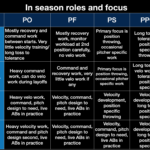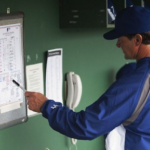College baseball needs pitch count limits and mandatory rest!!! … or does it?
DISCLAIMER: The views expressed in this article are specific to college baseball and do not apply to youth or high school baseball.
The college baseball world was in an uproar Monday evening when North Carolina pitched potential first round pick Kent Emanuel 51 pitches in relief, one day after he threw 124 pitches in a start (UPDATE: Emanuel was selected in the 3rd round by the Houston Astros). Anyone who follows such topics on Twitter saw the immediate backlash at Coach Fox for allowing him to pitch on such short rest and at the NCAA for not having maximum pitch counts and mandated rest periods. Writing the "take that decision out of the hands of the coaches" article is easy. The more difficult article to write is the one examining the flaws with that logic and some of the reasons behind why this abuse happens on a regular basis.
Maximum pitch count limit
If college baseball instituted a maximum pitch could limit, it certainly could decrease some of the abuse of collegiate pitchers. The issue becomes where do you set the limit? 120 pitches? 130 pitches? Every pitcher is different, and some can handle 120 pitches in a start, especially since most college pitchers only throw once a week. The problem with the post season is that pitchers are asked to come back on short rest, and pitchers who may only throw one or two innings at a time during the regular season are now asked to throw 3, 4, 5 innings at once. This mandatory pitch limit would not help protect this pitcher.
Mandated rest periods
Another common sense change the NCAA could make is to mandate rest periods after a certain number of pitches thrown. This would have prevented the situation that occurred Monday night because Emanuel would have been ineligible to pitch in that game. Many people feel that this change would only be necessary in the post season since most starters pitch one time a week and rarely, if ever, pitch in relief between starts. The post season is where you see this more often because of the large amount of meaningful games that are played in a short period of time, and this is where much of the glaring issues arise.
Why it happens?
It is very easy to just point the finger at the coach as a greedy, win-at-all-costs, monster who completely disregards his player’s safety. I believe that to be partially correct, but there are more factors at play than just “win-at-all-costs” coaches. NCAA Division I baseball has turned into a high pressure industry like most other college sports where the coach’s job depends primarily on winning. In reality, college athletic departments probably don’t tract the future health of the players who played for their coach and make decisions about his job based on that. They look at wins and losses, retainment rates, and graduation rates.
Keep in mind that for these coaches, coaching college baseball is not a hobby. They are not volunteers the way youth coaches are, and they are not paid a small stipend the way high school coaches are. They make very good money (some make hundreds of thousands of dollars) to win ball games. If they don’t live up to the expectations of the athletic department, they will lose their job and may lose their livelihood which can negatively impact their families.
Who is at fault?
Obviously, the coach should be the voice of reason in this situation, and should set their own limits on pitch counts and pitcher rest. The coach is certainly at fault to an extent, however we are not talking about 15 or 16 year old kids. College, and college athletics, is preparation for your future career. If Kent Emanuel were in UNC’s school of business (he may be for all I know) and he developed a million dollar business idea but didn’t protect it properly with a copyright or patent, nobody would bat an eye when someone else took it and made money off it. Kent Emanuel has a million dollar asset; his left arm. He should protect it the same way someone with a million dollar business idea would.
What can be done?
Putting pitch count limits and mandatory rest periods on post season play are certainly worth the NCAA’s time to investigate. But not everyone pitching in the post season has a million dollar asset that needs to be protected.
What if Emanuel weren’t a possible first round pick? What if he wasn’t a possible draft pick at all? What if he was just a college athlete who will never play professionally (like most college athletes are) and wanted to compete and give his team a chance to win a national title? If the NCAA instituted pitch count limits and mandatory rest periods, will they make a distinction between those who are protecting a million dollar asset and those who have no future past college?
The simple answer is no, they will not make that distinction, nor should they. And that is why I believe that pitch count limits and mandatory rest periods are not the best way to solve this problem. The senior who throws 170+ pitches in three days and was not planning on playing past college has suffered no loss by trying to help his team win. The player who has long pro career ahead of them and does the same has put their professional career and potential earnings at risk.
The NCAA (in all major sports) has conflicting motivations at work. Some players use it as preparation for a professional career, for some it is the pinnacle of their athletic career, and for coaches it is a way to earn a very good living. Because of these conflicting motivations, ultimately the player is responsible for their health, and should learn to advocate on their own behalf.
The best way to prevent future situations like this is to educate pitchers on the risks of such behavior. That way when the coach approaches a million dollar pitcher and asks “Do you have anything for me today?” The pitcher can make an educated decision and take responsibility for it regardless of the outcome.
In now way am I insinuating that throwing 120+ pitches or throwing on short rest is healthy for a pitcher's arm. Pitching in and of itself is a dangerous action. I am simply stating that college athletes are 19-23 years old and should be allowed to make decisions about their future the way any other adult can.
We all make mistakes that end up costing us something. Hopefully, Monday night will not hurt Kent Emanuel’s draft status and will not cost him a future injury. However, if he does fall in the draft because teams are afraid of the injury risk, or if he gets injured later in his career as a result of Monday's outing, he has nobody to blame but himself.
More from my site
 CCA Podcast 147 – How I addressed the naive question in my program
CCA Podcast 147 – How I addressed the naive question in my program Wanna Have a Catch?
Wanna Have a Catch? CCA Podcast 071: Part 2 of 3 of playing great team defense
CCA Podcast 071: Part 2 of 3 of playing great team defense CCA Podcast 020: The focus of our summer ball
CCA Podcast 020: The focus of our summer ball CCA Podcast 247 – Managing Two Way Players
CCA Podcast 247 – Managing Two Way Players CCA Podcast 044 – Constructing your batting order to maximize your team’s output
CCA Podcast 044 – Constructing your batting order to maximize your team’s output
 Posted by Kyle Nelson
Posted by Kyle Nelson- Posted in Uncategorized
 Jun, 04, 2013
Jun, 04, 2013 4 Comments.
4 Comments.
Elite members login here
Check out what’s New/Hot!
Recognizing, Diagnosing, and Fixing Common Hitting Flaws eCourse The 3 metrics we tested on Blast motion sensors this year Sneak Peek Inside an Elite Q and A The batting practice continuum Elite Member’s area table of contents 50+ “Chaos” hitting drills
5 sample Chaos hitting drills FREE
Mental Skills and Culture Building The hitting pyramid Welcome Elite Member, Trey! Ideas for a pitcher first practice 12 week bat speed improvement plan Make plans this offseason to have your team playing their best baseball at the end of the year” Top 5 hitting drills to translate practice skill to game performanceHow we used Blast Motion sensors with a team in 2019
What to do if your hitters are overmatched Welcome Elite Member, Tommy! Setting your baserunners up for success Welcome Elite Member, Mike! A consulting call with Elite Member Matt FREE Web Clinic: Developing Athletic, Consistent, Extraordinary Infielders
 Coach Kyle Nelson
Coach Kyle Nelson
Kyle,
This is an excellent article! I have seen this kind of action before, and it is terrible! This poor coaching happens in highschool also. I would like to put this link on my website. It will be under article of interest,and teaching articles. http://www.bigdogbaseballusa.com
Thanks
Bob Brown
Not a problem on putting a link up on your website. Thanks for reading. Hopefully, it the article gives good arguments on both sides of the issue. I don’t feel it is as cut and dry as it is at the youth level. Obviously, throwing a 14 year old 173 pitches in 48 hours is criminal, but a 21 year old should be responsible enough to participate in the decision. I just hope they are educated enough about the dangers of throwing a large number of pitches and throwing on short rest to make a decision they won’t regret later in life.
Another thing is if I was Dad of this pitcher, I would have confronted the coach. You just dont do something like this. A good coach when recruiting a pitcher should let the player and Dad know that there will not be any actions like this going on, on his watch. The Father should even ask the coach about certain situations. Wow some of these baseball coaches make me mad!
In a perfect world there are college coaches protecting their pitchers in-season and post-season. That each pitcher has a say on what he feels he is capable of pitching without any back-lash. The reality is that you get good and bad coaches at “ALL” levels of the sport. I have seen it in many sports, but have noticed my share of abusers in baseball. There are coaches that find a way around the rules in high school as well as in college. … I know I would want my player on a winning team. I’m sure we all do. But your question is more to how far should we push them to show a winning performance? Do you chance burning out a player for a win?
I don’t agree that one player due to his future prospects should be treated with more or less consideration than any other player as far as their over-all health, and mainly their pitching arm. A pitcher should be able to feel free to speak to his coach and say what they believe they are capable of pitching based off their over all performances; And not expect that the coach will penalize them, by not playing them. To many coaches tend to go to extremes in either sitting a pitcher out for going against them, or playing some player’s to the point of burn out/injuries. We then have players afraid to be honest. There should be a mutual respect between pitchers and coaches to bring out the best in both. Mandated recovery time and/or maximum pitch counts, should come down to knowing a pitchers individual ability; and then better to be able to access what the numbers should be. But knowing that there is no consistent coaching across the board,there should be a safety-net in place for the well being of the pitchers. Win or lose all coaches should have a reasonable standard to follow. NCAA and every other atheletic board needs to step in to set a standard for the well being of pitchers. Because we just cannot rely on a honor system here. It is not a perfect world yet. If a pitcher is a starter, his count should not exceed 85-90. A down time should be three days. If the pitcher is a reliever/closer, half the pitches of the max amount, and a one to two day down time before pitching again. This way the hope is less likelihood of injuries and greater longevity of playing time for the future, let it be for college or on to the pros.